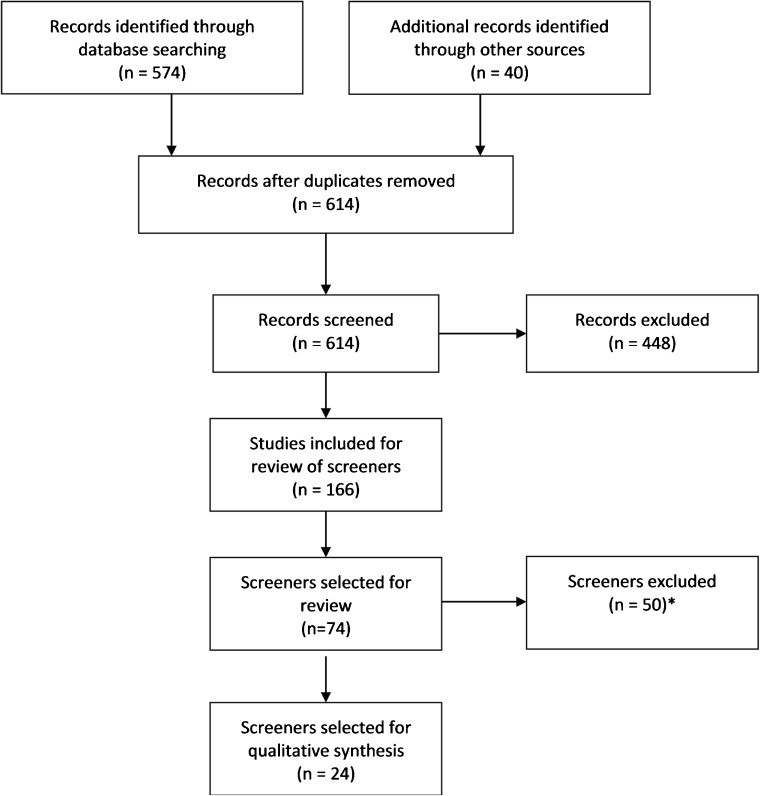Early detection and treatment of mental health conditions are crucial for improving patient outcomes and reducing healthcare costs. This article explores essential mental health screening tools suitable for primary care settings, focusing on their effectiveness and practical application.
 Flowchart for article selection in a systematic review of mental health screening tools.
Flowchart for article selection in a systematic review of mental health screening tools.
Multiple-Disorder and Single-Disorder Screening Tools:
Primary care providers (PCPs) can utilize various screening tools to assess patients for common mental health and substance use disorders. These tools fall into two categories: multiple-disorder tools and single-disorder tools.
PHQ and PSQ-Derived Tools:
The Patient Health Questionnaire (PHQ) and Patient Stress Questionnaire (PSQ) offer several validated subscales for screening various conditions. These include:
- PHQ-9: A nine-item questionnaire for detecting major depressive disorder. It boasts high sensitivity and specificity, making it a reliable tool for primary care.
- GAD-7: The seven-item Generalized Anxiety Disorder scale effectively screens for generalized anxiety disorder. While it shows good sensitivity for GAD, its sensitivity for other anxiety disorders like panic disorder and social anxiety disorder is lower.
- PHQ-2 and GAD-2: Ultra-short, two-item versions of the PHQ-9 and GAD-7, respectively, useful for initial screening. Their brevity makes them ideal for busy primary care settings, but they have lower sensitivity compared to their longer counterparts.
- AUDIT-C: A three-item screen for hazardous alcohol use. It’s quick to administer and has different cut-off scores for men and women.
These tools can be used individually or in combination to create a comprehensive screening protocol.
Other Multiple-Disorder Tools:
Beyond PHQ and PSQ, other multiple-disorder tools include:
- Hospital Anxiety and Depression Scale (HADS): Screens for both anxiety and depression, but its performance in primary care settings might not be as strong as PHQ-9.
- Web-Based Depression and Anxiety Test (WB-DAT): A web-based tool that screens for various anxiety and depressive disorders. Its digital format facilitates self-administration.
These tools offer broader assessments but may require more time and resources for administration and interpretation.
Ultra-Short Single-Disorder Tools:
Several ultra-short tools efficiently screen for specific conditions:
- CAGE: A four-item questionnaire for alcohol use disorders, exhibiting good sensitivity and specificity.
- Single Question Screening Tests: Single-item screens exist for drug use and alcohol use. While brief, they demonstrate strong psychometric properties.
These concise tools allow for quick assessments, especially in time-constrained settings.
Choosing the Right Tool:
The optimal mental health screening tool depends on factors like patient population, clinical workflow, and available resources. PCPs should consider the psychometric properties of each tool, including sensitivity and specificity, alongside practical aspects like administration time and scoring methods. Implementing effective screening protocols requires careful planning and consideration of follow-up procedures for patients who screen positive. It’s vital for PCPs to have a plan in place for patients who screen positive, whether it involves in-house treatment or referral to specialized care.
